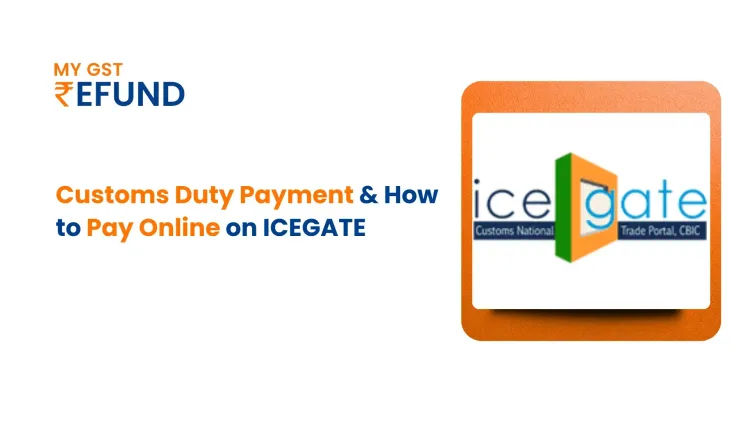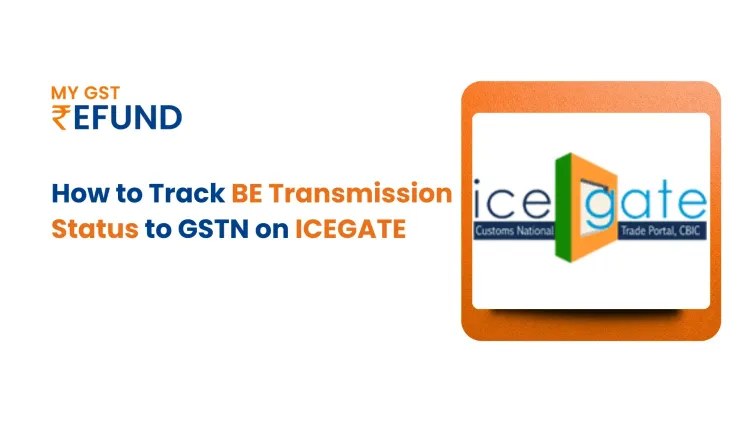GST TCS Refund (Section 52):The Complete 2025 Guide for Sellers
Published on: Fri Sep 26 2025
Bio (Reveal/Hide)

GST TCS Refund Compliance- Section 52
GST TCS is not comparable to Income Tax TCS. While income tax TCS is left pending under the Income Tax Act, GST TCS would be operative only on e-marketplace transactions.
What is GST TCS?
The process by which e-commerce websites (like Amazon, Flipkart, Myntra, Snapdeal, Meesho, Nykaa etc.) are obligated to collect taxes from the sellers on their platforms is known as Tax Collected at Source (TCS).
1% of the taxable value of supplies is the TCS rate (0.5% CGST + 0.5% SGST in intra-state or 1% IGST in inter-state).
Reason for GST TCS
The government has introduced TCS under GST with a view to:
- Make e-commerce transactions transparent.
- Monitor seller turnover across several e-commerce platforms.
- Prevent tax evasion by keeping electronic records of all the transactions.
In this case, the e-commerce operators are operating as collection agents and need to deduct and pay the tax to the government treasury.
Who will be the Target Audience
- Sellers who sell through e-commerce platforms (Amazon, Flipkart, Meesho, Myntra, etc.).
- MSMEs that have cash flow problems due to GST TCS deductions.
- Companies interested in learning the step-by-step procedure of the GST TCS refund claim.
GST TCS Mechanism Understanding (Section 52 of the GST Act)
GST Act of Section 52: Tax Collection at Source (TCS)-E-commerce Operators Tax Collected at Source is referred to under Section 52 of the CGST Act (TCS)- All e-commerce operators, such as Amazon, Flipkart, etc., will be collecting tax at source on net taxable supply made by registered suppliers through their platform.
Max TCS rate is 0.5% CGST + 0.5% SGST or 1% IGST.
Collection: The TCS is collected on the net taxable supplies, or sales made through the platform, deducting a provision for cancellations and returns.
Deposit: The TCS deposit must be paid to the government by the tenth of the following month.
Return Filing: GSTR-8 containing the details of supplies and the TCS collected has to be filed by the e-commerce operators.
Credit to Supplier: The supplier's electronic cash ledger will carry the credited amount by TCS, which may be used towards offsetting their GST liability.
To whom is TCS paid?
All e-commerce operators are registered under GST, i.e., Amazon and Flipkart.
Rate of Collection:
Intra-State Supplies → 0.5% CGST + 0.5% SGST
Inter-State Supplies → 1% IGST
How it Works (Step-by-Step Example)
- A vendor is selling an article of ₹10,000 to a customer using Amazon.
- Amazon is withholding 1% TCS = ₹100 from the vendor's payment.
- Amazon is remitting this ₹100 to the government in the vendor's GSTIN.
- Amazon is reporting this withholding in Form GSTR-8 every month.
Form GST-8- It is a GSTR-8 Form that is a Statement of TCS (Tax Collected at Source), which is to be filed by E Commerce Operators. Form GSTR-8 holds details of taxable supplies
Seller's Point of View
- The seller gets ₹9,900 (TCS deducted).
- That ₹100 is not gone – it is credited to the Electronic Cash Ledger of the seller on the GST portal.
- The vendor may use this credit in the future to settle tax liabilities or draw a refund.
Refund Process of GST TCS by Sellers
Eligibility for Refund
For eligibility for GST TCS refund, the vendor should:
- Possess a valid GST registration.
- Possess unutilised TCS credit in their Electronic Cash Ledger.
Unutilised TCS Credit under GST
Unused credit of TCS arises where the e-commerce operators remit TCS of the sellers to the government and deposit the same, and the seller cannot utilize the same as a credit against their GST obligation. It usually happens due to limited tax liability, a filing mismatch of GSTR, or where the seller has surplus available input.
Such unused TCS credit is held in the seller's electronic cash ledger and used for payment of future GST. Such credit cannot be used as a refund in a regular situation due to the rationale that TCS is a tax obligation adjustment rather than an input tax credit. Reconciliation of GSTR-2A/2B with sales data leads to effective use of such credit.
Step-by-Step Process
Step 1: Reconciliation
- Download Amazon/Flipkart dashboard sales data.
- Match with TCS data as reported by the e-commerce operator in GSTR-8.
- Cross-check with your auto-populated version of GSTR-2A.
Why is it so?
Mismatch will lead to the disallowance of refund claims.
Step 2: Acceptance of the Credit
Log in to the GST portal.
- Navigate → Services > Returns > TDS and TCS Credit Received
- Accept the matched entries as per your books.
On acceptance, the credit is credited to your Electronic Cash Ledger.
Step 3: Use of the Credit
Refund amount can be utilized to offset your GST (output tax) burden.
- Step 4: Refund Claim
In case of excess credit over obligation in adjustment, submit Form RFD-01. - Information to be submitted:
- Reason for refund (excess credit of TCS)
- Amount claimed
- Supporting documents (sale records, GSTR-2A reconciliation, operator statement)
- Amount refunded in excess, and the claim received by the GST officer on submission.
How MyGST Refund Benefits Exporters in Claiming Refund
MyGST Refund simplifies the refund procedure for the exporters via India's very first auto-refund portal for GST refund. Exporters are required to wait, err, and provide long documents while getting refunds on zero-rated exports (IGST refund, ITC refund, and inverted duty refunds).
Exporters are made easy with MyGST Refund via the following:
- Automated Tools like GST Refund Calculator & Know Your Refund to verify eligibility and refund amount.
- End-to-End Support for filing of refund claim and supporting documents.
- Document-Free Filing through invoice and bill of shipment matching of GST returns.
- Improved Processing Speed through professional treatment of notices, replies, and technical queries.
Pan-India Support with consulting and regulatory compliance.

Common Challenges
- Cash Flow Blockage:
- Lower payment to vendors as TCS is deducted in advance.
- Small and medium enterprises are short of liquidity.
- Mismatched Data:
- Seller invoice and GSTR-8 mismatches filing may result in a delay in refunds.
Complex process:
RFD-01 reconciliation and filing may be daunting for MSMEs without accountants.
Best Practices for Compliance
- Reconcile monthly: Reconcile reports of the marketplace with GSTR-2A.
- File on time: File GSTR-3B and GSTR-1 punctually.
- Check cash ledger: Keep tabs on balances and settle refunds well in advance.
- Save something: Save invoices, returns, commission deductions, and TCS reports.
Summary
- GST TCS is not an advance tax-collected cost.
- This fund can be accessed or utilized by the sellers through proper reconciliation.
- Proper compliance creates free cash flow.
Read- Claiming Inverted-Duty GST Refunds Under the 90% Rule
Why MyGSTRefund is good for Sellers
Simple refund of GST for online sellers on MyGSTRefund.
- TCS credits the automated reconciliation solution.
- End-to-end filling service for Form RFD-01.
No Success, No Fee Model → Pay only if your refund is credited successfully.
It prevents MSMEs and online merchants from losing revenue on hung credits.
Frequently Asked Questions
Q1: How is GST TCS distinct from GST TDS?
TCS: Is retained by e-commerce operators on behalf of vendors.
TDS: Is withheld by government bodies or such entities while making payments.
Q2: Is registration under GST a prerequisite to trade on e-commerce portals?
Yes, all vendors (other than exempted classes) must be registered under GST to trade on e-commerce portals.
Q3: How is the refund of GST TCS obtained?
Typically, within 60 days from the date of filing Form RFD-01, upon proper documentation and authentication.
Q4: If there is a mistake in the amount of TCS?
Inform the e-commerce operator promptly and correct in GSTR-8 so that the refund will not be rejected.
Related Posts





